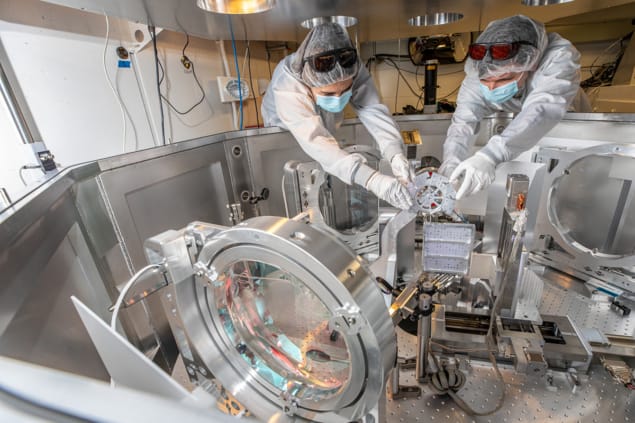
A second beamline area at the Berkeley Lab Laser Accelerator (BELLA) Center will soon open to users allowing researchers to study extremely hot plasmas, investigate cancer therapies and discover new materials for quantum science. Dubbed Interaction Point 2 (iP2), the new beamline will be able to produce a laser beam about a thousand times brighter than is currently possible at the lab.
Installation of iP2 began in 2020 at BELLA, which is operated by the Lawrence Berkeley National Laboratory (LBNL). The facility was completed on schedule despite a shutdown in March 2020 caused by the COVID-19 pandemic. The first commissioning runs at iP2 began in September 2022, with engineers successfully delivering petawatt, picosecond laser pulses.
Those initial experiments applied about half the maximum pulse energy to low-density foam targets as well as thin metal or plastic ones. The foam targets allow the laser to penetrate further than the other materials, which creates a very strong magnetic field, like a vortex in the foams. That ability to boost particles to higher energies in shorter distances promises new, and possibly cheaper, means of exploring fundamental physics.
We’re ushering in a new era of high-intensity laser experiments
Cameron Geddes
“By compressing the laser energy into this short pulse and tiny focus, we can produce these very exotic small focal spots in the targets,” says LBNL physicist Lieselotte Obst-Huebl, who led the iP2’s installation.
High intensity
The facility’s initial experiments will include studies of the FLASH effect, where radiation delivered by protons in short, intense bursts is used to kill cancer cells but not the healthy tissue nearby. BELLA researchers want to extend previous studies of the effect to thicker skin and tumour tissue.
In one early experiment, Obst-Huebl told Physics World, a collaboration with Lawrence Berkeley biologists will irradiate anaesthetized live mice to study whether the higher power produces “the beneficial effects we’ve seen in cell samples” in iP1 investigations.
Other planned studies for iP2 include methods of improving qubits and high-temperature superconductors. “We’re ushering in a new era of high-intensity laser experiments,” adds Cameron Geddes, director of the LBNL’s accelerator technology and applied physics division.
